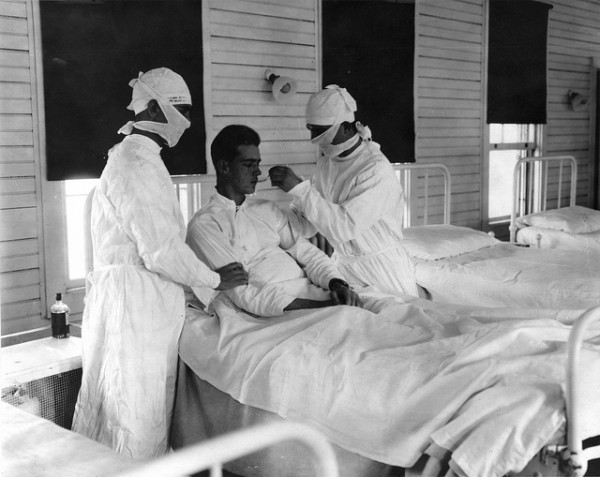Researchers Expose the Secrets of a Flu Pandemic

Orleans, Louisiana, Circa 1918
Researchers believe they have unraveled the mystery of the deadly 1918 flu pandemic that killed more than 50 million people around the world.
According to a study recently published in the Proceedings of the National Academy of Sciences (PNAS), scientists from the University of Arizona (UA) initially set out to determine just what made the 1918 pandemic so deadly. According to the authors of the study, unlinked most influenza strains, the 1918 strain primarily affected and killed people in their 20s and 30. Most standard flu strains today prove more deadly when infecting infants and elderly adults with compromised immune systems. However, influenza is constantly evolving, and can remain unpredictable. The most current strain of influenza appears to most commonly hospitalize the obese and pregnant, hitting younger generations harder than most flu seasons, according to the U.S. Centers of Disease Control and Prevention (CDC).
The UA researchers quickly determined from historical data and medical files that the 1918 flu virus -- a pandemic of the influenza A strain -- was largely killing young adults through secondary bacterial infections, especially pneumonia.
To determine why this was, the research team developed a "molecular clock" of the influenza A strain, analyzing the rate at which mutations build up along the virus's DNA over time. Using this molecular clock model, the researchers were then able to trace the flu strain's ancestry, much like the same team had done to determine how influenza had spread through different species over time for a study published back in February.
Following the strain-A's history, they determine that a H1N1 ancestor, the human H1 virus, had been quietly circulating among people since the early 1900s, and likely picked up genetic material from a bird flu virus just before 1918, turning it into the deadly pandemic strain that indirectly encouraged aggressive bacterial infection.
Much like CDC experts expect is the reason young people today are having difficulty fighting off this year's flu strain, the 1918 influenza-A strain was so genetically different than its predecessors that young people were the most likely not to have any appropriate antibodies from past flu infections that could help fight off the strain. With a flu victim's body was slowly weakening while fighting an unfamiliar virus, it became more vulnerable to bacterial infection. With a lack of antibiotics during the time, these infections resulted in numerous deaths.
However, people born before 1880 had been exposed to a H3N8 virus, developing antibodies that could help fight off the bird-flu tendencies of the influenza-A virus.
Today, the researchers assure readers, this kind of pandemic could not happen thanks to advances in antibiotic treatment and flu vaccines.
The study was published in PNAS on April 28.
Apr 29, 2014 01:37 PM EDT





